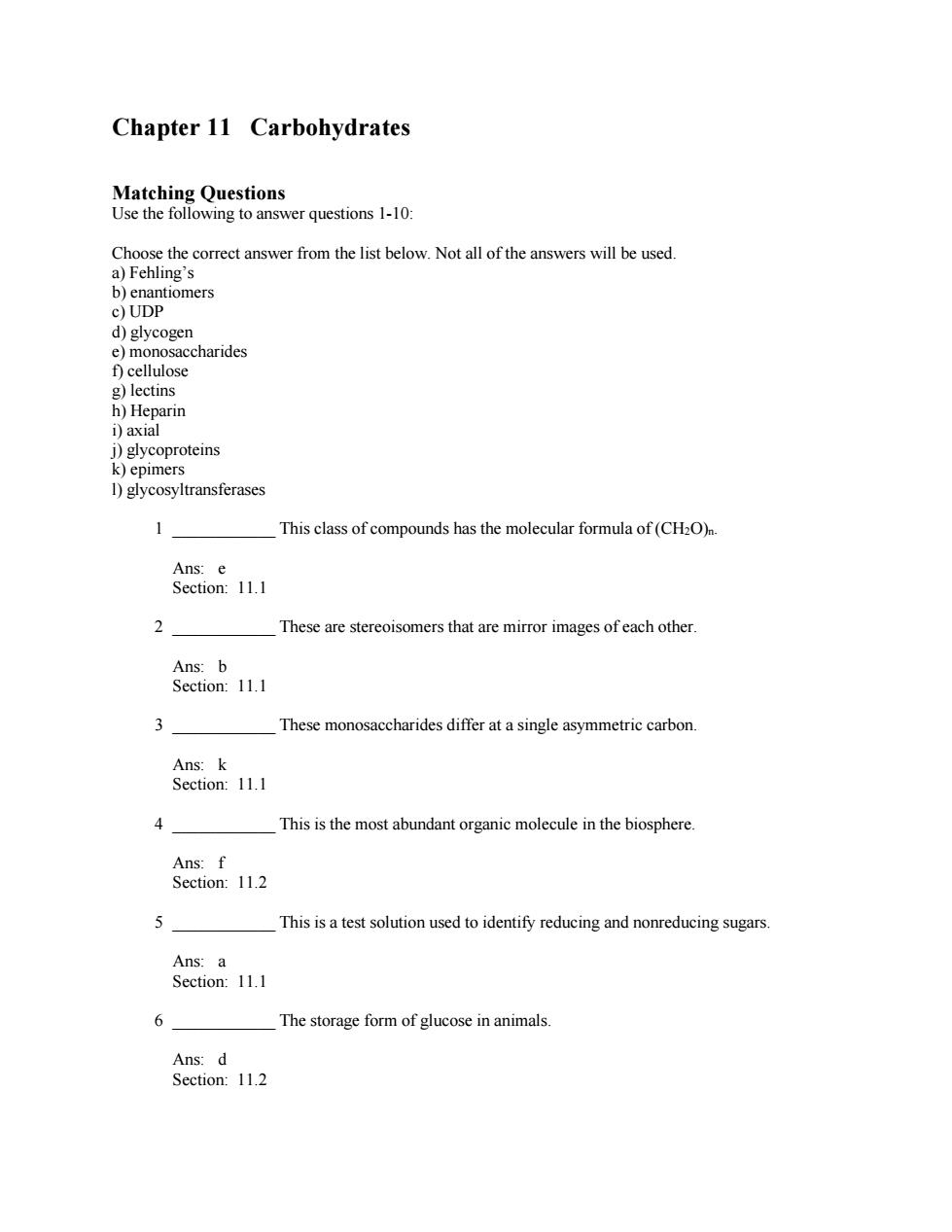正在加载图片...

Chapter 11 Carbohydrates Matching Questions Use the following to answer questions 1-10: Choose the correct answer from the list below.Not all of the answers will be used. a)Fehling's b)enantiomers e)UDP d)glycogen e)monosaccharides f)cellulose g)lectins h)Heparin i)axial j)glycoproteins k)epimers 1)glycosyltransferases This class of compounds has the molecular formula of(CH2O)n. Ans:e Section:11.1 2 These are stereoisomers that are mirror images of each other. Ans:b Section:11.1 These monosaccharides differ at a single asymmetric carbon. Ans:k Section:11.1 4 This is the most abundant organic molecule in the biosphere. Ans:f Section:11.2 5 This is a test solution used to identify reducing and nonreducing sugars. Ans:a Section:11.1 6 The storage form of glucose in animals. Ans:d Section:11.2Chapter 11 Carbohydrates Matching Questions Use the following to answer questions 1-10: Choose the correct answer from the list below. Not all of the answers will be used. a) Fehling’s b) enantiomers c) UDP d) glycogen e) monosaccharides f) cellulose g) lectins h) Heparin i) axial j) glycoproteins k) epimers l) glycosyltransferases 1 ____________ This class of compounds has the molecular formula of (CH2O)n. Ans: e Section: 11.1 2 ____________ These are stereoisomers that are mirror images of each other. Ans: b Section: 11.1 3 ____________ These monosaccharides differ at a single asymmetric carbon. Ans: k Section: 11.1 4 ____________ This is the most abundant organic molecule in the biosphere. Ans: f Section: 11.2 5 ____________ This is a test solution used to identify reducing and nonreducing sugars. Ans: a Section: 11.1 6 ____________ The storage form of glucose in animals. Ans: d Section: 11.2